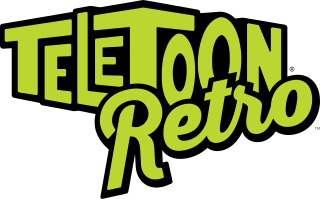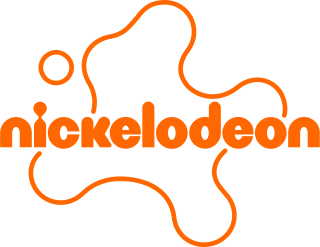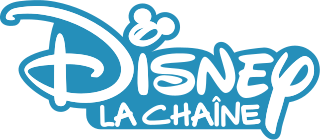
Nelvana Limited is a Canadian animation studio and entertainment production company owned by Corus Entertainment since 2000. Founded in July 1971 by Michael Hirsh, Patrick Loubert, and Clive A. Smith, it was named after Nelvana of the Northern Lights, the first Canadian national superhero, who was created by Adrian Dingle. The company's production logo is a polar bear looking at Polaris, the North Star.

YTV is a Canadian English language discretionary specialty channel owned by YTV Canada, Inc. a subsidiary of Corus Entertainment. The channel and its programming is targeted at children and young teenagers. Its name was originally thought to be an abbreviation for "Youth Television", though the channel's website has denied this.

Astral Media Inc. was a Canadian media conglomerate. It was Canada's largest radio broadcaster, with 84 radio stations in eight provinces. Astral was also a major player in premium and specialty television in Canada, with 23 specialty channels and two conventional stations. In addition, Astral had a presence in out-of-home advertising.

Corus Entertainment Inc. is a Canadian mass media and television production company. The company was founded in 1987 as Shaw Radio Ltd. as a subsidiary of Shaw Communications and was spun-off from Shaw in 1999. It has prominent holdings in the radio, publishing, and television industries. Corus is headquartered at Corus Quay in Toronto, Ontario.

Treehouse TV is a Canadian English-language discretionary specialty channel that was launched in 1997. Its name comes from sister network YTV's former programming block, "The Treehouse". The channel is owned by YTV Canada, Inc., a subsidiary of Corus Entertainment. Having launched on November 1, 1997, it is the first full-day preschool-oriented TV channel in Canada.

Family Channel is a Canadian English-language specialty channel owned by WildBrain Television Inc., a subsidiary of WildBrain. The network primarily airs children's television series, teen dramas, as well as other programming targeting a family audience. Despite having its own headquarters in the Brookfield Place office in Financial District, the channel is transmitted from Corus Quay.

SériesPlus is a Canadian French language specialty channel devoted to French-language scripted comedy and dramatic programming. The channel is owned by Corus Entertainment.

Vrak was a Canadian French language specialty channel owned by BCE Inc. subsidiary Bell Media. The channel primarily broadcast live-action programming aimed at 13-to-35 age group audiences.

Teletoon Retro was a Canadian specialty channel that was owned by Corus Entertainment that was based on the Teletoon programming block. The service was dedicated to broadcasting classic animated television programs such as The Raccoons as well as some live-action series.

Télétoon is a Canadian French language specialty channel owned by Corus Entertainment that broadcasts animated series aimed at kids, teens, and adults. Its name is a portmanteau of "télévision" and "cartoon".

Historia is a Canadian discretionary service owned by Corus Entertainment. The network broadcasts French-language programming related to history and historical fiction, and is a sister network to the English-language History; both channels operate as Canadian licensees of the U.S. network History.

Télétoon Rétro was a Canadian French language Category B specialty television channel that was owned by Corus Entertainment. The channel was based on the former Télétoon programming block Télétoon Retro and was dedicated to broadcasting French-dubbed animated series that had premiered on television at least 10 years prior to their airing on Télétoon Retro. Along with its English language sister station, Teletoon Retro, combined, both were available in over 9 million Canadian households as of 2013, having the most subscribers among the digital Canadian specialty channels.

Teletoon at Night was a late night programming block that aired on Teletoon. It primarily carried adult animation and other programming targeting teen and adult audiences.

Nickelodeon is a Canadian English language discretionary specialty channel based on the American cable network of the same name owned by YTV Canada, Inc., a subsidairy of Corus Entertainment under a brand licensing agreement with Paramount Media Networks, a division of Paramount Global.

Boomerang is a Canadian English language discretionary specialty channel owned by Corus Entertainment. It is a licensed version of the U.S. channel of the same name, which primarily broadcasts animated programming from the Warner Bros. Animation library, including Warner Bros. Cartoons and Hanna-Barbera productions among others, as well as contemporary reboots of classic franchises. The channel also occasionally broadcasts reruns of Cartoon Network original series.
Adult Swim is a Canadian English language discretionary specialty channel owned by Showcase Television, Inc., a subsidiary of Corus Entertainment. The channel primarily airs animated and live-action comedies targeting a teenage and young adult audience. Its branding is licensed from the Adult Swim programming block broadcast by Warner Bros. Discovery's Cartoon Network; it is the first full-time television channel to use the "Adult Swim" brand.

Disney Channel is a Canadian English language discretionary specialty channel owned by Corus Entertainment under license from The Walt Disney Company, which began broadcasting on September 1, 2015. It is a localized version of the U.S. basic cable network of the same name. broadcasting live-action and animated programming aimed at children and teenagers between the ages of 9 and 18.

La Chaîne Disney is a Canadian French-language specialty channel owned by Teletoon Canada, Inc., a subsidiary of Corus Entertainment under license from The Walt Disney Company, and launched on September 1, 2015, replacing Télétoon Rétro. It is a localized version of the U.S. subscription network Disney Channel, broadcasting live-action and animated programming aimed at children in French in Canada.



















